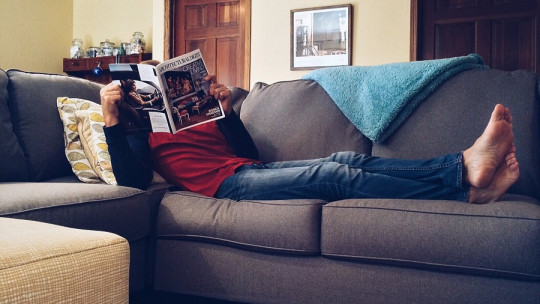On many occasions life gives us a bigger blow than we can bear. And this ends up sinking us. Behavioral activation therapy can help you bounce back.

On many occasions, we feel guilty, useless, lazy, clumsy, stupid for realizing that “we are stuck”, here the “cognitive muddle“, that is, you begin to value yourself as useless, lazy, clumsy, when you could value yourself as someone who does not want to feel that way and you are going to do something, even if it is minimal, today yes, tomorrow too and the next day I rest, little by little. Without However, we are not taught to speak to ourselves with perspective, self-compassion, and flexibility.
Think about it. You are on the couch after sitting for 6-7 hours in an office or non-stop moving here and there with many tasks and you manage them as they arise, it is normal for the body and mind to ask you for a little rest or I ask you for a whim. And this is when we can value that little bit of rest style “pizza, movie and sofa” or we could value it with “walk with someone, nature and then a snack and go home more comfortable than all things.” Both things are appetizing, right? But which one is more affordable? In which situation are you going to talk down to yourself for feeling bad and in which are you going to feel bad – at first – for breaking the vicious circle of a sedentary lifestyle?
The couch is there, you just have to plop down and the pizza is brought to your home, Netflix puts it on a plate for you, the trick is set. You have to put the clothes on, you have to wait for whoever it is and then go home and take a shower. That desirable little time of walking with so-and-so is displaced by the sofa, and if you notice, when you sit on the sofa day in and day out… how do you begin to value yourself?
Okay, and you’ll tell me “of course, how easy it is for you who don’t have my life with so many complications, work, now family, my back hurts, etc. You’re perfect, let’s go.” Well, we all have our whims and our “couch” moments. Another thing is that the sociocultural standard is “give more, more and more, more and more.” For example, did you know that the Instagram or TikTok algorithm works tyrannically by promoting those accounts that make more and more and more and more? Is your mind tyrannical to you, telling you more and more negative things?
What is behavioral activation?
The behavioral activation It consists of structuring a program of rewarding tasks and activities that allow the person to “get out” of the cognitive mess that has ended up paralyzing them (Barraca Mairal, 2018). CA has its origins in functional contextualism and is inserted in the framework of third generation therapies. And the reader who has not studied Psychology will think, “this guy is talking to me in Chinese.” OK. Briefly, the behavioral activation It grows based on understanding that all human beings grow conditioned by society, culture, beliefs, wanting to fit in, etc. Living today can be difficult for some people; depression does not have a biological origin but rather a contextual one (Pérez Álvarez, 2007). If you have to work in two different places enduring everything to get to €1000/month, we could assume that you will end up tired on a daily basis, “your battery” is at minimum and what will probably happen will be a “sofa and pizza” . You are not guilty of the sociocultural context in which you live.
The behavioral activation It has to do with empowering the person to regain that autonomy and independence to ensure that they add goals and subgoals that lead them to “achieve” valuable behaviors (Barraca Mairal, 2010). When I Say “get“I mean doing what matters, valuable behaviors are not achieved, they are maintained. If you like sports because it makes you feel good, if you do it once a week, is that enough? No. A passionate He sees sport as a lifestyle and not as a time to obtain something artificial (bikini operation).
What can we do when we just feel like we have problems?
And here comes the million dollar question, where do I start if I only have problems in my head? Next, I am going to propose a series of general things that encourage “wanting more”:
- Nature and sun.
- Quality social contact.
- Break the sedentary routine, that is, nip “feeling heavy” in the bud with stretching, mobility, climbing stairs, etc.
- Start psychotherapy to help you handle certain situations. If you can’t afford a psychotherapy session, you can always start reading about related topics. Another option is to talk to someone who you think will understand and validate you.
- Go beyond the mobile phone a little more and connect with the noises of analog life, not with life behind the screen.
- Begin to balance your diet, although from time to time there is some ultra-processed food or another.

To clarify all this a little, the question here that I offer you to ask yourself is: “what is preventing (sensations, thoughts, stress, etc.) from contacting what matters to me (value behavior, being a healthy person )?”
I can also offer you these questions to reflect on: What do I want to do and what is the least I can do now? How do I end up falling on the couch/bed if I know it’s better for me to go train or go out for a workout with someone? Why am I considering all this if at the end of the day I am very comfortable on the sofa?
What are the principles of behavioral activation?
In genesis, the behavioral activation It is developed following a series of fundamental principles (Martell, Dimidjian, Herman and Medina, 2013):
- Make the person understand that what they have done so far “to solve a problem” is what is probably causing the problem to persist. Depression ends up becoming a downward spiral, incentives are lost in a problematic or unencouraging context.
- Establish a context in which the person realizes this, along with the fact that more of the same does not always work, you still have to do something different, even if you have to start “without desire.” That is, the person is encouraged to redefine their life situation.
- Following the above, the person understanding the context in which they are is essential for the success of behavioral activation. To achieve this, we work by establishing what values govern her life and what he does (goals and subgoals) to reach what matters to him. The idea is also to encourage the person to contact the action and the subsequent consequence. That is, if she manages to break the functional sequence called “sofa and pizza” to go out to play sports or take a walk, the consequence will be appetitive, she will feel good and proud of herself.
- The protocol itself is to structure through learning principles and with robust and sufficient scientific evidence a gradual exposure to life, that is, to recover habits, dynamics, interests, activities and contacts that together lead to value.
- Furthermore, the person is “empowered” in the sense of making them useful when it comes to being able to contact the antecedents and consequences of the moment. It rewards and encourages the person to be able to do their own functional analysis (an evaluation tool with extensive scientific evidence) of the specific functional sequence.
- It is promoted that the person can do something different from what that sensation, emotion or thought that is accompanying them asks of them. If the feeling of tiredness tells you to “stay on the couch” but you know that it would be good for you to take a walk in a park, what will you do?
Finally, it is necessary to amplify a fundamental message that is being launched from psychotherapy. You are not guilty of staying on the couch or having to juggle two or even three jobs. You are responsible for calmly, lovingly and patiently unraveling little by little that skein that you have in your head and it is a reflection of the complicated situations in which you have been, are and will be (because we cannot control life).








